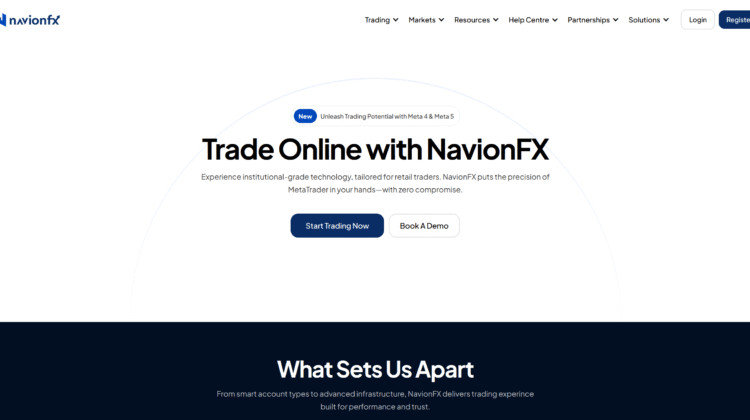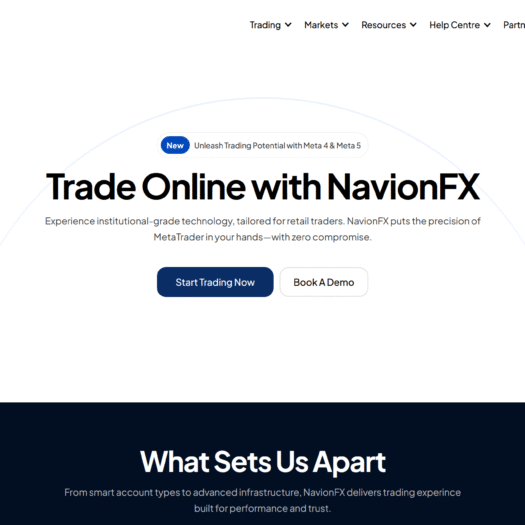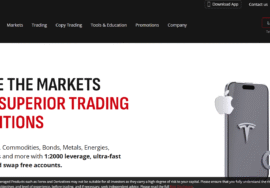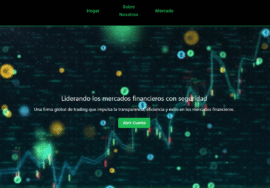
7 Alarming Warning Signs: Why NavionFX Seems Extremely Risky
7 Alarming Warning Signs: Why NavionFX Seems Extremely Risky

NavionFX advertises itself as a broker offering forex, CFDs, cryptocurrencies, and claims of regulation, transparency, good customer support, etc. On its site one sees typical marketing: multiple account types (Starter, Advanced, Elite), tight spreads, leverage, trading tools. For some traders, especially new ones, the presentation can seem professional and appealing. However, deeper checks via independent safety-review sites, regulatory registers, domain info, and user reports raise many serious red flags. Here are seven critical risk signals to know before considering engaging with NavionFX.
1) “Scam Confirmed” label by broker-watchdog platforms
NavionFX has been listed as “Scam Confirmed” by BrokersView under its “Fake or Unregulated Brokers” section. This classification reflects that the broker is viewed by multiple analysts and reviewers as unreliable. It means that complaints, regulatory warnings, and trust metrics have accumulated to a point where safety experts are recommending people avoid it. (Source: BrokersView)
2) Regulation claim is misleading / not valid for financial services
NavionFX claims to present itself as regulated, stating oversight from Saint Lucia. However, research by safety sites, including a Q&A item at BrokersView, indicates that the registration it has in Saint Lucia is as an International Business Company (IBC). Saint Lucia’s IBC registration does not equate to a financial services license that allows provision of regulated trading/investment/forex/CFD services. In other words, what is claimed is not sufficient under law to confer the protections users expect. (Source: BrokersView Q&A)
3) Low trust score, suspicious domain & company data
Sites like WikiFX show that NavionFX has no valid regulatory information listed, and warn users to stay away. WikiFX rating is low; risk levels are flagged as high. Domain ownership appears masked or not clearly verifiable. The company claims an address in Saint Lucia at “Ground Floor, The Sotheby Building, Rodney Village, Rodney Bay, Gros-Islet, Saint Lucia,” but this type of address listing is often used by offshore or unverified brokers. Combined, these technical/company info gaps raise credibility concerns. (Source: WikiFX)
4) Withdrawals / client reliability concerns
There are user complaint threads and video reviews that mention “blocked withdrawals”, “fake promises”, “balance shown but cannot withdraw profit”, and “credentials or regulation claims unproven.” While not all user claims are always fully documented, the consistency of these complaints across multiple forums suggests a pattern. Some users also say that once profit builds up, the broker tends to impose additional verification hurdles or impose fees unexpectedly. (Source: YouTube review summaries; BrokersView)
5) Risk disclosures exist but may not compensate for the lack of regulation
NavionFX does include a Risk Disclosure Statement. It warns that trading carries risk, that losses can exceed profits, that leverage magnifies risk, volatility can cause slippage, etc. This is standard. However, having risk disclosures does not compensate for absence of legal protections. If the platform is not actually regulated where it claims to operate, then disclosures are legal warnings but not safeguards. (Source: NavionFX risk disclosure page)
6) “Too good to be true” marketing
NavionFX lists several account tiers with promises of tight spreads (sometimes claimed zero), leverage, multiple asset classes, and allegedly excellent trading tools. When brokers promise tight spreads, high leverage, and many bonus features in combination, they often hide costs or restrict terms so heavily that actual user experience suffers. Some reviews note that while account tiers sound promising in marketing, actual live conditions (spreads, fees, withdrawal speed) are far worse than advertised. The gap between marketing claims and user reports is a concern.
7) Absence of licensing in major regulator registries
Major regulators such as the UK Financial Conduct Authority (FCA), Australia’s ASIC, EU bodies like CySEC, etc., do not list NavionFX as an authorised entity. When you search public registers, no matching license number or authorisation for forex/CFD trading is found. This absence means that if you use the broker and something goes wrong, there is no higher authority to appeal to or to pursue legal recourse via regulation. Safety depends heavily on regulation in credible jurisdictions; lacking that exposes clients’ funds to higher risk.
Conclusion: Final Verdict on NavionFX
Considering all available evidence, NavionFX exhibits many classical traits of a high-risk or potentially fraudulent broker. While parts of its website and disclosures appear professional and include standard risk warnings, the legal, regulatory, and user experience evidence strongly suggest that these are not sufficient to ensure reliability or safety.
The “Scam Confirmed” classification by BrokersView is arguably the most serious red flag. That label is not assigned lightly; it is based on observed user reports, regulatory investigations or warnings, domain and company data. For a trader who cares about preservation of capital and legal protections, that alone warrants caution. It is often better to avoid platforms with such labels rather than risk trying to “test” them with funds, because the downside of being wrong is significant.
NavionFX’s claim of being regulated via an IBC registration in Saint Lucia without a valid financial services license is misleading. Users may see the name “Saint Lucia” and assume it means real regulation, but this kind of registration does not equate to oversight or protection under financial regulation. When brokers use offshore entity registration in marketing, users must be very careful to check official regulatory records themselves. The presence of risk disclosures on the site does not change the fact that regulation is missing where it matters.
User reports of blocked withdrawals or heavy verification after profits, plus generic domain ownership, masked contact info, and unverified address claims, add up to a pattern. Several traders report that while they could deposit easily, getting money out—particularly profits—is where problems start. That is a central concern, because a broker that locks users into funds or imposes barriers after deposit behaves unlike reputable brokers, which process small withdrawals promptly as part of normal operations.
Furthermore, major regulator registries do not list NavionFX. For many serious traders, being not listed means having no means of complaint, no oversight, no client fund protections, and little possibility of recourse if funds are misused or if terms change disadvantageously.
For anyone considering using NavionFX:
- Only risk money you can afford to lose entirely.
- Do a small deposit first, then request withdrawal of that same small amount to test the process.
- Keep screenshots of all terms, dashboard balances, communications, promises.
- Check regulatory encyclopaedias for your country as well as for Saint Lucia, if that is referenced. Don’t rely solely on what the site says.
- Avoid platforms that pressure you to deposit more, or promise too much return with little risk.









